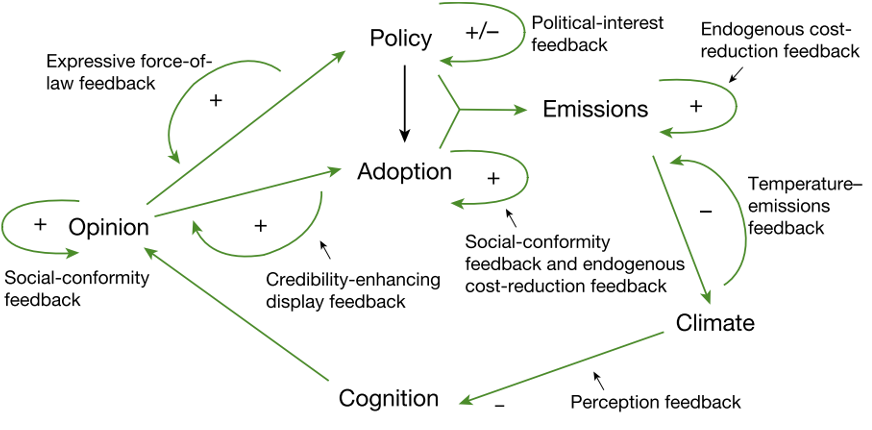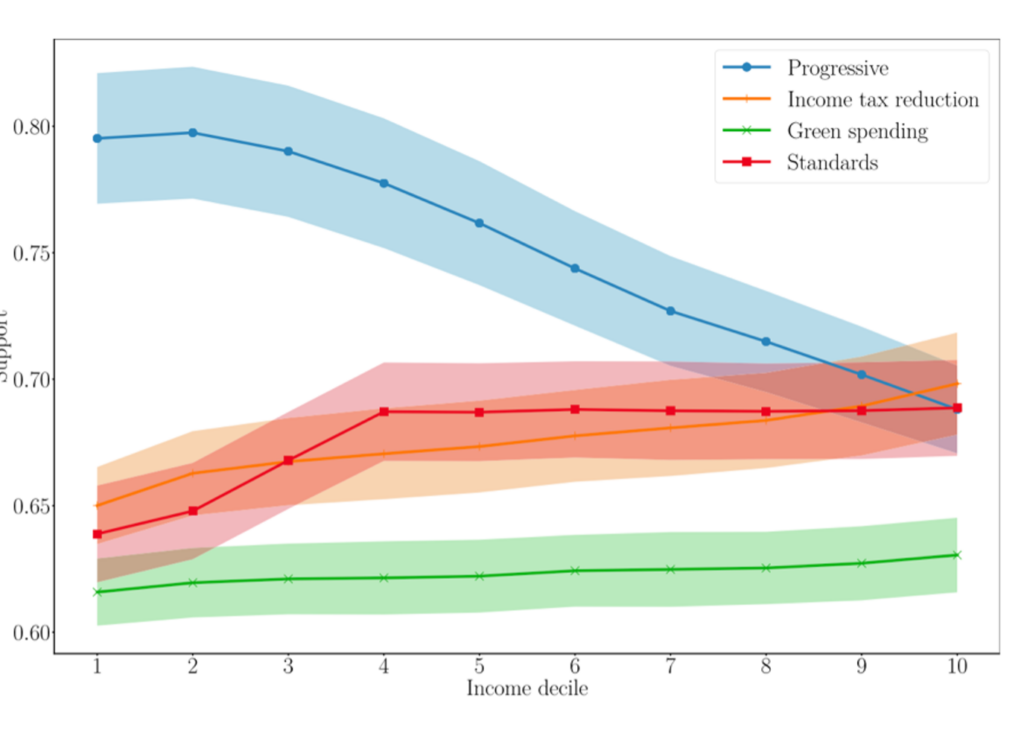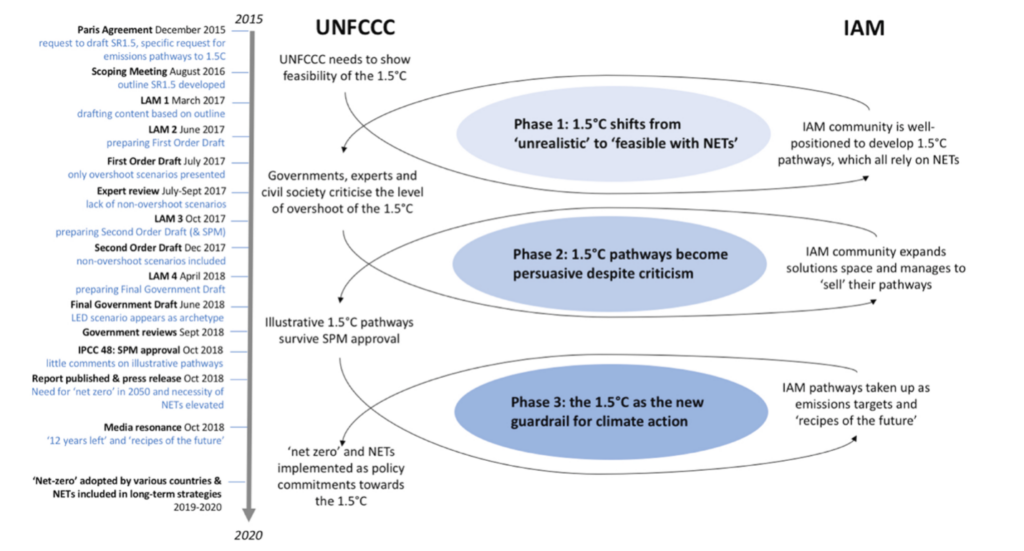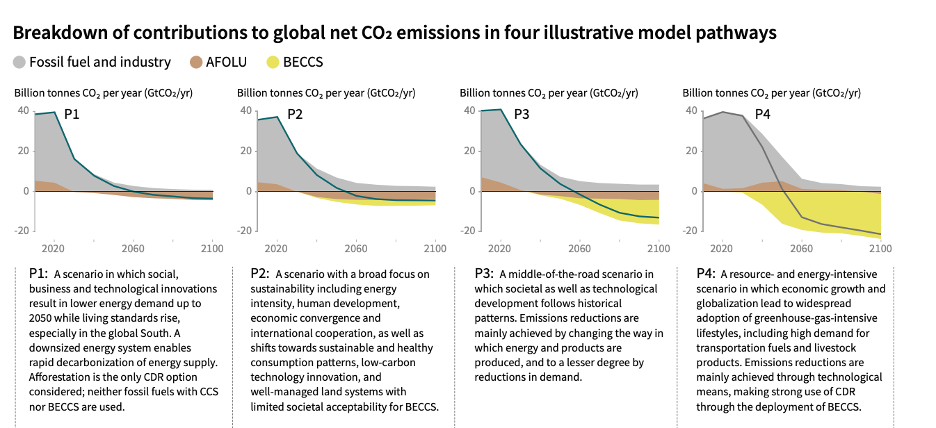Energy Innovation partners with the independent nonprofit Aspen Global Change Institute (AGCI) to provide climate and energy research updates. The research synopsis below comes from AGCI Executive Director James Arnott, and a full list of AGCI’s quarterly research updates covering recent climate change research on clean energy pathways is available online at https://www.agci.org/solutions/quarterly-research-reviews
A couple years ago, a team of climate scholars posed a provocative question: “The Earth has humans, so why don’t our climate models?” (Beckage et al., 2020). Climate models clearly show how human activities are changing the climate, but they offer only a limited view of how a changing climate is also changing us. Since human actions are at the root of climate change, the scholars argued, incorporating more about people into climate models is crucial for creating realistic climate forecasts and making informed decisions.
Researchers are beginning to respond by modeling factors like public opinion, social norms, climate risk perception, technology learning rates, and the interactions between them. The results can help explain how, and how fast, we might reduce greenhouse gas emissions, with implications for policy design and technology adoption. This new research also reminds us how the assumptions included (or ignored) in models shape collective imagination about what climate solutions are possible.
Connecting the climate and social spheres
In February 2022, a team led by Frances Moore of the University of California, Davis published an article in Nature that directly responded to the scholars’ provocation. The researchers created a model to represent an interconnected climate-social system, shown conceptually in Figure 1.
This model connects behavioral factors and processes, such as opinion and cognition, to actions that influence emissions. Opinion is responsive to how individuals perceive climate risk, which is influenced, in turn, by experience with climate factors like rising temperatures, and mental processes that affect risk perceptions. For instance, the experience of climate impacts can motivate individuals to support climate policy and shift social norms. However, the process can also run in reverse due to ideologically-motivated climate denial or evolving notions of what constitutes a “normal” climate. The model also demonstrates how support for policy or technology adoption accelerates when learning leads to cost reductions, or dampen when political, legal, or cultural winds shift.
The team used numerical estimates for each factor and subfactor. Given inherent uncertainties for many of the inputs, they ran the model 100,000 times to include ranges for different input estimates. The emissions generated from each run connect to a simple climate model to provide end-of-century temperature change relative to historical levels.
The researchers found that about one-quarter (28 percent) of model runs result in temperature rise of around 1.8ºC, and nearly all (98 percent) generate warming at least 0.5ºC lower than existing business-as-usual scenarios. However, nearly three-quarters (70 percent) of runs lead to climate futures above the Paris Agreement’s commitment to keep warming below 2ºC, and all exceed its 1.5ºC aspiration.
While the distribution of model results is not intended to offer probabilities of different climate futures, each trajectory exhibits a set of defining social characteristics. For example, the most optimistic trajectory of 1.8ºC warming is distinguished by high levels of social conformity around pro-environmental behavior, low lag times between action in high-income countries and in low- and middle-income countries, and the enactment of ambitious climate policies.
In other words, staying below 2ºC in this simulation entails a combination of individual behavioral and attitudinal changes, which reinforce systemic change through strong leadership, adoption of ambitious policies, and technology diffusion.
For emissions pathways that exceed the 2ºC target, social characteristics include technical challenges in the form of lower learning rates and weak policy, low levels of public support, or social fragmentation. Nearly half of the model runs resemble the status quo, where increasing policy ambition and adoption tracks only slightly beyond existing commitments, and temperatures land about 2.3ºC above historical levels.
This study represents an early prototype of the kind of climate model the Intergovernmental Panel on Climate Change (IPCC) could ultimately include in its assessments. Past assessments feature climate models driven by scenarios of emissions that are generated by a different modeling framework, further discussed below. While these models capture many economic and technological factors, they do not yet incorporate many of the feedbacks and processes outlined in Figure 1. This study could aid consideration of what kinds social tipping points could accelerate rapid emissions reductions.

Public support
To unpack just one of the social factors considered by Moore et al., public opinion can either suppress or elevate climate policy ambition, but policymakers may not always accurately intuit what drives public support.
An April 2022 paper in Global Environmental Change by Théo Konc of Spain’s Institute of Environmental Science and Technology, and co-authors, models the interaction between public opinion and climate policy ambition. Using public opinion data from Spain, the researchers simulate the impact of different climate policies on household wellbeing and emissions reduction, while also evaluating changes in household-level support for those policies. The model can test variations in household support independent of a policy’s effectiveness or even its impact on the household’s own welfare.
It does so by incorporating interactions between variables like household ideology, perception of effectiveness, and fairness. The authors argue that although a policy may be designed to maximize efficacy or wellbeing, these factors alone may not ensure public support. And since public support can be essential for sustained policy enactment, policymakers should pay more attention to the myriad drivers of public opinion during the policy design.
The constructed model compares four idealized policies: three different carbon tax policies and one generic policy of performance standards. The carbon tax scenarios differ in how revenue is expended: “progressive recycling” redistributes revenue to lower-income households, “labour tax” returns revenue to households in proportion to their income, and “green spending” utilizes the revenue for emissions-cutting expenditures.
As Figure 2 highlights, although all policies achieve and maintain a minimum threshold of public support, support varies by income bracket (among other factors not shown here). Notably, the “green spending” approach of employing a carbon tax is the least popular across all income brackets, even though it was designed to be the model’s most efficient application of taxpayer funds to reduce emissions.

Although the policies and public opinion data for this model are designed to test hypotheses rather than forecast real-world conditions, this research demonstrates why understanding the dynamics of public opinion can aid in policy design. For instance, major support for progressive income redistribution can potentially help lock-in broad constituent support for climate policy, even if the specific policy design is less efficient at reducing emissions. Or, higher income households may insert their perspective early in the process, shaping the policy narrative, which could then constrain the ability of policymakers to address income inequality in the context of climate policy. This research does not make specific recommendations, but the ability to simulate public support could help policymakers seeking to design effective and durable climate policies.
Politics in modeling
Development of climate models is also affected by interactions between social and climate systems. Current climate and energy models, though highly technical computer simulations of complex systems, are still designed by and for humans, so they inherently reflect social and political notions of what is possible and desirable.
A March 2022 paper in Environmental Science and Policy led by a PhD candidate at Utrecht University in the Netherlands explored this underlying social process in depth. Here, the authors examined how IAMs featured in IPCC reports evolved in response to political interest in limiting warming to 1.5ºC following the 2015 Paris Agreement.
Though not a climate model, IAMs are leading tools for understanding how humans can respond to climate change, and they furnish the emissions scenarios used by most climate models. Many of the IPCC’s insights on how to mitigate greenhouse gas emissions are derived from IAMs.
The Van Beek et al. study conducted interviews of IAM modelers and policymakers and analyzed IPCC and UN Framework Convention on Climate Change (UNFCCC) documents to understand the evolution of policy discourse and the modeling approach leading to and following from the IPCC Special Report on 1.5ºC. As shown in Figure 3, the researchers identified a series of IAM iterations that transformed scientific and policy discourse on climate solutions.

Following the Paris Agreement, policymaker interest in the feasibility of a 1.5ºC scenario mobilized new efforts to explore how to achieve it, even though prior IAM efforts considered it “unrealistic.” By doing so, IAMs started to incorporate more options for negative emissions technologies (NETs) such as bioenergy with carbon capture and sequestration (BECCS) to further escalate emissions reductions beyond energy sector transition. When initial IAM results were presented, non-governmental organizations and some scientists criticized the reliance on NETs. Some arguments focused on how attention to NETs could cause policymakers to rely too much on NETs at the expense of other solutions, while others expressed specific concerns about how some NETs like bioenergy carbon capture and sequestration (BECCS, see yellow in some pathways of Figure 4) could have significant adverse consequences on food supply, ecosystems, and equity. This response led IAM modelers to further iterate and incorporate an exploration of, in the words of one modeler interviewed for the study, “radical lifestyle changes…beyond what we would normally [think] was possible.” Ultimately this led to the Low Energy Demand Scenario, represented by P1 in Figure 4.

This iteration provided a consideration of at least one way to stay below 1.5ºC without overshooting, and without the substantial use of NET approaches like BECCS present in other pathways. As the IPCC 1.5°C Summary for Policymakers reads: “1.5°C pathways that include low energy demand […]low material consumption, and low GHG-intensive food consumption have the most pronounced synergies and the lowest number of trade-offs with respect to sustainable development and the SDGs.”
While the achievability of this scenario is still debated, the fact that it was even on the table in the first place is, according to Van Beek et al., a consequence of the “political calibration” that occurs between the realms of science and policy. Such calibration, in this instance, is not a critique of the scientific integrity of the model or its outputs, but instead a recognition of how scientific tools reflect values and priorities of the societies that produce (and fund) them. As those change, so do the range of imagination and future possibilities.
Conclusion
Recent events motivate why we should want to deepen our understanding of human behavior amidst escalating climate change. For example, could the ongoing heatwave, which climate change has made much more likely, in India and Pakistan accelerate popular demand for climate action? Or, how might Russia’s war in Ukraine make transitioning Europe off gas more politically expedient? Designing models that internalize these often complex and difficult to predict human dimensions can help us better understand how these and future events can shape the path ahead.
The research reviewed here shows how progress is being made. Moore et al. demonstrate how tightly connected social-climate models can help pinpoint the social characteristics needed to achieve low-emissions pathways. Konc et al. simulate how actual and perceived benefits of a policy design can shape public opinion and resulting levels of policy ambition. And, finally, Van Beek et al.’s exploration of how IAMs evolved to envision 1.5ºC pathways reminds us how what we choose to model shapes our “shared imagination” of possible climate futures.
Building on this type of research, many researchers are striving to work more closely with others to connect climate and social models more closely. Last summer, the Aspen Global Change Institute (where I work) brought these communities together to advance this discussion and efforts are already underway which could be featured in future IPCC efforts. Much needed progress in this area can help us more deeply understand how, and how much, societies will need to shift in order to stave off undesirable climate change.
Literature cited
Beckage, B., Lacasse, K., Winter, J.M., Gross, L.J., Fefferman, N., Hoffman, F.M., Metcalf, S.S., Franck, T., Carr, E., Zia, A., Kinzig, A., 2020. The Earth has humans, so why don’t our climate models? Clim. Change 163, 181–188. https://doi.org/10.1007/s10584-020-02897-x
IPCC, 2018: Summary for Policymakers. In: Global Warming of 1.5°C. An IPCC Special Report on the impacts of global warming of 1.5°C above pre-industrial levels and related global greenhouse gas emission pathways, in the context of strengthening the global response to the threat of climate change, sustainable development, and efforts to eradicate poverty [Masson-Delmotte, V., P. Zhai, H.-O. Pörtner, D. Roberts, J. Skea, P.R. Shukla, A. Pirani, W. Moufouma-Okia, C. Péan, R. Pidcock, S. Connors, J.B.R. Matthews, Y. Chen, X. Zhou, M.I. Gomis, E. Lonnoy, T. Maycock, M. Tignor, and T. Waterfield (eds.)]. In Press.
Konc, T., Drews, S., Savin, I., van den Bergh, J.C.J.M., 2022. Co-dynamics of climate policy stringency and public support. Glob. Environ. Chang. 74. https://doi.org/10.1016/j.gloenvcha.2022.102528
Moore, F.C., Lacasse, K., Mach, K.J., Shin, Y.A., Gross, L.J., Beckage, B., 2022. Determinants of emissions pathways in the coupled climate–social system. Nature 603, 103–111. https://doi.org/10.1038/s41586-022-04423-8
van Beek, L., Oomen, J., Hajer, M., Pelzer, P., van Vuuren, D., 2022. Navigating the political: An analysis of political calibration of integrated assessment modelling in light of the 1.5 °C goal. Environ. Sci. Policy 133, 193–202. https://doi.org/10.1016/j.envsci.2022.03.024